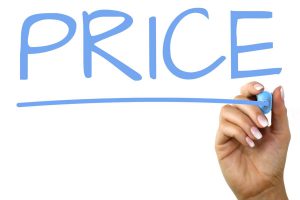Competitive Pricing Intelligence Solutions recover product and pricing information from market leader websites including their competitors and change necessary details. It helps an E-commerce business remain one step ahead of the market competition. Pricing tools assemble and screen competitive data shifting it in to intelligence. They draw data at scheduled interval of time with automation – tracking competitor’s online presence. Pricing intelligence contains tracking, monitoring and analyzing pricing data to understand the market to make educated pricing changes at speed and scale. Since product pricing fluctuates randomly, retailers need to continually monitor their relative price position and include changes. However, this doesn’t mean dropping the price just because a competitor does.
Importance
Price Intelligence is necessary for retailers, for several key reasons:
- Increased consumer price sensitivity.
- Increased aggressiveness from competitors.
- Increased price transparency.
Application
There are a few steps to apply Competitive Price Intelligence.
The old-style model of monitoring price changes manually is inefficient, time consuming and often inaccurate. The vast amount of existing data makes it more difficult to scale. So, data collection needs to be scalable. As a company grows, its number of SKUs, channels and competitors to monitor grows with it. This is where automation comes in convenient, as the retailer won’t have to repeat those time-consuming and inefficient processes over and over again. By automating competitive pricing analysis, retailers can obtain exact pricing data in a timely manner. This frees up valuable time and resources, eradicates potential human error, and delivers relevant and accurate information. Data Scraping software help in automating also.
Retailers can make quicker response and decisions depending on the data and outperform their competitors based on market trends and behaviors. Say for an emerging clothing brand, competing with big, established brands, any bit of intel is a big deal. It wants to know which of its competitors sell basic shirts, when, and with what offers and shipping options. Seeing this, the emerging cloth brand can offer something similar, or be more creative to persuade the consumers to buy the brand or make a switch.
Pricing intelligence is nothing without immediate action. If a retailer collects a heap of data about the price of sweaters in December, but analysts review the data in May, it is way too late. On one hand the prices are irrelevant five months later, and on the other hand, no one is going to buy sweaters in the middle of summer. Retailers need to act on data as and when the market changes, not six months later. If a retailer notices a spike in sweater sales in December, it needs to react at that time. It does not matter if it’s creating its own sale or sending out promo deals and coupons. The benefits of acting on more accurate data faster can mean an increase in sales and getting new customers.
So, it’s necessary to implement a dynamic pricing strategy that can swing based on the latest and greatest competitor visions. Retailers should use pricing intelligence to manage its relative price position in the competitive market, anticipate margin pressures, and boost revenue at the same time. If it doesn’t, it’s certain that its competitor will.

